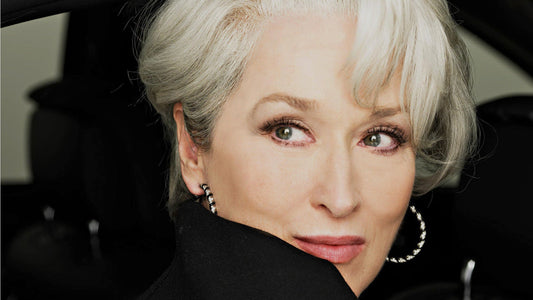
Marilyn Monroe: A Star Beyond Time
Marilyn Monroe, an icon of beauty and femininity, has left a lasting mark on the world of cinema and society at large. Born as Norma Jeane Mortenson on June 1, 1926, her transformation into Marilyn Monroe is a tale of resilience, ambition, and tragic vulnerability. This article delves into her extraordinary life, illustrious career, and the profound influence she wielded over generations, making her more than just a film star but a cultural phenomenon.
The Early Years: The Making of Marilyn Monroe
Marilyn Monroe's childhood was anything but stable. Born in Los Angeles, California, she spent much of her early life in foster homes and orphanages due to her mother’s struggles with mental illness. Her mother, Gladys Baker, was plagued by emotional and psychological issues that eventually led to her institutionalization, leaving Monroe to navigate a world filled with uncertainty and emotional turmoil. This tumultuous upbringing would shape her later persona as a performer who often masked her vulnerabilities with charm and poise.
In her teenage years, Monroe worked various jobs, including as a model. She began her modeling career in 1944 when she was discovered by photographer David Conover while working at a munitions factory during World War II. Her striking looks began to draw attention, leading to her first modeling contracts and, eventually, her entry into the film industry.
Rise to Stardom
Marilyn Monroe's career began in earnest in the early 1940s. After signing with Twentieth Century Fox in 1946, she skyrocketed to fame with a series of successful films including "The Seven Year Itch" (1955) and "Some Like It Hot" (1959). Monroe captivated audiences with her comedic talent and alluring presence, quickly becoming the quintessential blonde bombshell.
Filmography Highlights
Some of the standout films in Marilyn Monroe's career include:
- The Asphalt Jungle (1950) - In this crime drama directed by John Huston, Monroe played a small but pivotal role, showcasing her dramatic capabilities alongside a stellar cast.
- All About Eve (1950) - A classic film that examined the darker side of fame and ambition, Monroe played the naïve actress, showcasing her burgeoning talent in a film that has become a timeless piece of cinema.
- Gentlemen Prefer Blondes (1953) - This musical-comedy solidified her status as a sex symbol, particularly with the iconic "Diamonds Are a Girl's Best Friend" number, which remains a defining moment in her career.
- The Seven Year Itch (1955) - Featuring the famous scene of Monroe standing over a subway grate, this film is emblematic of her appeal and her ability to blend humor with sensuality.
- Some Like It Hot (1959) - Widely regarded as one of the greatest comedies in film history, Monroe's performance alongside Tony Curtis and Jack Lemmon showcased her comedic brilliance and timing.
Monroe’s ability to blend comedic timing with sexual charisma made her an unparalleled star in Hollywood. She brought a depth to her roles that was often overlooked, demonstrating that she was not merely a pretty face but a talent deserving recognition. Her image became synonymous with glamour and allure, but it also concealed the complex, often tumultuous internal struggles she faced, challenging societal norms and expectations of women in her time.
The Complexities of Fame
Despite her glamorous exterior, the life of Marilyn Monroe was marked by personal turmoil. The pressures of fame took a toll on her mental health, a struggle that was exacerbated by her tumultuous relationships, including three marriages—James Dougherty, Joe DiMaggio, and Arthur Miller. Each of these unions added layers to her persona, revealing her desire for love and stability amidst the chaos of her public life.
Monroe's first marriage to James Dougherty lasted from 1942 to 1946. Following her rise to fame, Monroe sought a more independent and fulfilling life, which led to the marriage's dissolution. Her second marriage to baseball legend Joe DiMaggio was brief but intensely public; they were married for only nine months in 1954, yet the union captured the media's fascination. DiMaggio reportedly struggled with Monroe's fame and public persona, leading to tensions in their relationship. After their divorce, DiMaggio continued to care for Monroe, even arranging her funeral years later.
Monroe's most significant and perhaps tumultuous relationship was with playwright Arthur Miller. Married from 1956 to 1961, this union saw Monroe strive for emotional depth and intellectual companionship. However, as her struggles with mental health escalated, their marriage struggled under the weight of her insecurities and his artistic ambitions. Monroe's vulnerability was often overshadowed by her public image, but she remained an advocate for her own career, famously fighting for better roles and pay, which was unprecedented for women in Hollywood at the time.
Marilyn Monroe’s Influence in Film
Monroe's influence in film is undeniable. She redefined the archetype of the “dumb blonde,” infusing her characters with depth and complexity, challenging the stereotypes placed on women. By portraying women who were both alluring and intelligent, she demonstrated that women could be more than mere objects of desire. This shift in representation opened doors for future generations of actresses who sought to express their creativity and individuality.
During an era when women's roles were often limited to the domestic sphere or reduced to mere tropes, Monroe created memorable characters who resonated with audiences on a personal level. Her ability to articulate the inner lives and struggles of women in her roles was groundbreaking, and her performances brought to light the capabilities of actresses, inspiring generations of future stars to bring their own experiences and emotions to their craft.
Cultural Impact and Societal Reflections
The societal influence of Marilyn Monroe extends far beyond Hollywood. In a post-war America that idealized domesticity, Monroe represented both the allure of femininity and the conflict women faced in seeking their own identities. Her image of the glamorous woman was amplified through advertisements, fashion, and art, shaping societal perceptions of beauty.
Monroe was also a product of her time, reflecting the changing landscape of American society. She became a symbol of the sexual revolution, embodying a new, liberated woman who challenged traditional gender roles. Her ability to navigate fame while grappling with her own identity issues made her a figure of fascination and empathy. From her bold fashion choices to her unapologetic pursuit of personal happiness, she defied the norms of her era, becoming a beacon for those seeking to break free from societal expectations.
Monroe’s struggles with mental health, self-image, and her quest for validation resonate with many today. Her story highlights the dichotomy between public persona and private pain, a narrative that continues to challenge societal norms around mental health and female empowerment. In a world that often seeks to define women by their appearance and relationships, Monroe’s life encourages a nuanced discussion about self-worth and the importance of understanding one's identity.
The End of an Era
Tragically, Marilyn Monroe's life was cut short when she died on August 5, 1962, at the age of 36. Her untimely death shocked the world and ignited countless theories and discussions surrounding the pressures of fame, mental health, and the darker aspects of celebrity culture. The circumstances surrounding her death, labeled a probable suicide by overdose, continue to provoke intrigue and controversy. Questions about the pressures she faced in Hollywood and the relationships that failed to provide her with the love and support she craved linger to this day.
Her legacy remains alive in the cultural consciousness, with numerous biographies, films, and documentaries exploring her life. "My Week with Marilyn," featuring Michelle Williams as Monroe, and various cinematic portrayals have fueled public interest in her life story, depicting both her triumphs and tragedies. Monroe's narrative serves as a cautionary tale about the price of fame, while simultaneously celebrating the spirit of a woman who dared to defy expectations and carve her own path in a challenging industry.
Legacy and Commemoration
Decades after her death, Marilyn Monroe continues to be a symbol of beauty and vulnerability. From exhibitions showcasing her life and career to the resurgence of interest in her films, her influence remains palpable. The Marilyn Monroe statue in Palm Springs, California, and the annual Marilyn Monroe birthday celebration demonstrate the ongoing admiration for her life and legacy.
Her fashion sense, characterized by her iconic dresses and hairstyles, continues to influence designers and fashion enthusiasts today. The “Monroe Effect” in popular culture speaks to her ability to inspire artistic expression across mediums. The Marilyn Monroe Museum in Michigan and various tribute events ensure that new generations can learn about her contributions to film and culture.
Moreover, Marilyn Monroe's story invites reflections on the treatment of women in the entertainment industry, sparking conversations about the importance of mental health, empowerment, and authenticity. In many ways, her life inspires ongoing discussions about the complexities of being a woman in the public eye, making her an ever-relevant figure. Her struggles with self-image and mental health resonate in today's conversations about fame, body positivity, and the importance of mental wellness, emphasizing the need for compassion and understanding in an often-critical world.
Frequently Asked Questions About Marilyn Monroe
1. What is Marilyn Monroe best known for?
Marilyn Monroe is best known for her iconic roles in films such as "Some Like It Hot," "The Seven Year Itch," and "Gentlemen Prefer Blondes." She is celebrated for her contributions to cinema and her status as a cultural icon, representing both beauty and vulnerability.
2. How did Marilyn Monroe die?
Marilyn Monroe died from an overdose of barbiturates on August 5, 1962. Her death was ruled a probable suicide, although theories and speculation continue to surround the circumstances of her passing, reflecting the public's fascination with her life and struggles.
3. Was Marilyn Monroe married?
Yes, Marilyn Monroe was married three times: to James Dougherty, Joe DiMaggio, and Arthur Miller. Each marriage brought unique challenges and experiences that shaped her life, portraying her desire for connection and stability amidst her tumultuous career.
4. What influence did Marilyn Monroe have on feminism?
Marilyn Monroe's influence on feminism can be seen in her efforts to challenge stereotypes and advocate for better roles and pay for women in Hollywood. Her life and struggles resonate with contemporary discussions about female empowerment and mental health, symbolizing the complexities women face on the road to independence.
5. Why is Marilyn Monroe considered a cultural icon?
Marilyn Monroe is considered a cultural icon due to her enduring legacy as a symbol of beauty, femininity, and vulnerability. Her films, image, and life story continue to inspire and provoke discussions about gender, fame, and identity, making her an integral part of cinematic history.
Conclusion
Marilyn Monroe's life was a tapestry woven with threads of glamour, tragedy, and resilience. Her journey from a troubled childhood to international stardom embodies the complexities of the human experience. By examining her life and legacy, we gain insight into not only a remarkable woman but also the societal issues that persist today. As we reflect on her story, we are reminded of the importance of compassion, understanding, and the quest for authenticity in a world often dominated by superficiality. In the end, Marilyn Monroe remains a timeless figure, whose story continues to resonate with audiences and inspire future generations to seek authenticity, empathy, and connection.
















